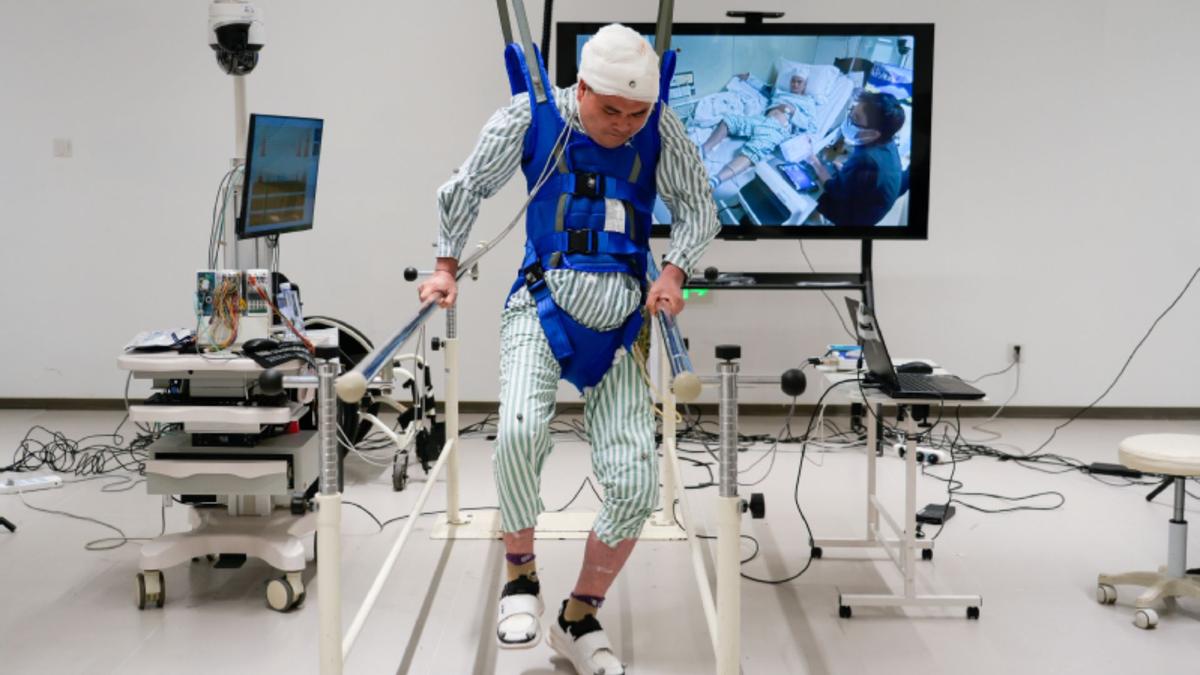For decades, paralysis caused by spinal cord injuries has been considered irreversible. Even the most advanced brain-computer interfaces (BCIs), like those developed by Elon Musk’s Neuralink, have assumed that paralyzed limbs are beyond recovery. However, a revolutionary clinical trial in China is challenging this belief.
Researchers at Fudan University in Shanghai have successfully enabled four paralyzed patients to regain control of their legs just hours after undergoing minimally invasive surgery. This breakthrough involved implanting electrode chips into both the brain and spinal cord, effectively reestablishing the communication pathways that were disrupted due to spinal injury.
The results were nothing short of remarkable. Within 24 hours, the patients could move their legs again, and within a few weeks, they were walking independently. Some even reported restored nerve sensations, marking a dramatic improvement in their condition.
Unlike traditional BCIs, which use external computers to facilitate movement, the Chinese team’s innovative brain-spinal interface works by directly stimulating dormant nerves in the spinal cord. This process, known as “neural remodeling,” allows the nervous system to rewire itself, potentially eliminating the need for lifelong assistive devices like wheelchairs or braces.
Lead researcher Jia Fumin, from the Fudan Brain-like Intelligence Science and Technology Research Institute, emphasized the significance of this achievement: “In the past, everyone was familiar with high-end medical equipment from abroad, but now we have entered uncharted territory, achieving the world’s first new generation of original brain-spinal interface system solutions.”
The procedure involves implanting two tiny electrode chips, each roughly 1mm in diameter, into the motor cortex of the brain. These chips decode neural signals and then send precise electrical stimulation to the spinal nerve roots, creating a direct communication link between the brain and the paralyzed muscles.
The first patient, a 34-year-old man who became paraplegic after a fall, underwent the procedure on January 8. Within 24 hours, he could lift both legs. By the end of two weeks, he was stepping over obstacles and walking up to 16 feet (5 meters) with a standing frame. Three other patients who underwent surgery in February and March also showed significant recovery within weeks.
Previous research on neural remodeling, including studies conducted in Switzerland, had shown similar effects but only after six months. The Chinese team’s approach has drastically reduced this timeline to just two weeks, suggesting a more efficient method with minimal surgical damage.
The first patient’s follow-up visit in late February provided even more evidence of the procedure’s effectiveness. “My feet feel warm and sweaty, and there is a tingling sensation. When I stand, I feel the muscles in my legs contracting,” he reported. He also regained sensations indicating when he needed to use the toilet, signaling deeper nerve restoration.
Notably, all the medical devices used in these surgeries were developed in China, marking a significant milestone in the country’s advancements in neurotechnology. With 3.74 million spinal cord injury patients in China and 90,000 new cases annually, this technology has the potential to revolutionize treatment options and improve the lives of millions.
This pioneering research offers new hope for paralyzed patients worldwide, bringing us one step closer to overcoming the longstanding challenge of paralysis. The success of this trial signals a bright future for spinal injury recovery, with China now leading the way in neural technology.
By Impact Lab


